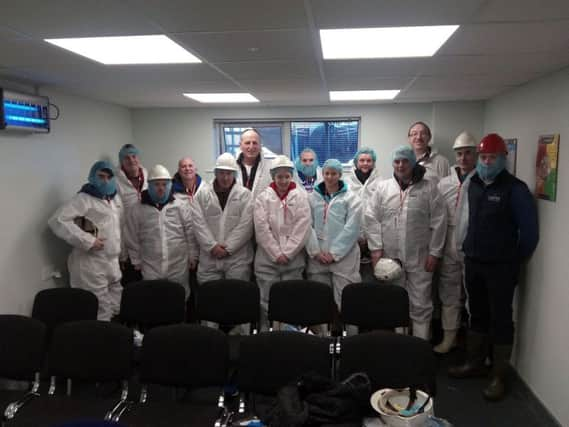Walking the supply chain with Sheep BDG


As part of the BDG programme, and following feedback from the members, the visit was arranged to allow members to better understand the role of the abattoir in the lamb supply chain.
It also helps members to understand better what the abattoir requirements are for lambs and help them improve the way they present lambs for slaughter to meet customer requirements and improve the price they receive.
Advertisement
Hide AdAdvertisement
Hide AdThe farmers were welcomed by Senan White, CAFRE, who introduced Linden Foods Supply Chain Manager Keith Williamson and Lamb Procurement Manager Gary Foster. After an introduction to the abattoir, the group was given a comprehensive tour of the kill floor and lairage.
In the chill area, the group members had the opportunity to see different grades of lambs coming through the plant that day. Gary outlined what the ideal lamb is for Linden Foods to allow them to process for their customers’ needs, with discussion on how farmers can market lambs that meet this specification.
The group was joined by William Chesney (DAERA Senior Technical Inspector) who explained the grading system and what the grader is looking for when assessing each carcase as the lambs were weighed and graded at the scale, prior to entering the chill.
William and Gary both reinforced the importance of weighing and handling lambs regularly to assess their market readiness. In particular, they emphasised the importance of not allowing lambs to becoming overfat. This not only restricts the potential market outlets, but is uneconomical for the farmer.
Advertisement
Hide AdAdvertisement
Hide AdThe farmers were guided through the slaughter area where each stage of the slaughter process was explained. The visit finished with a walk through live lamb reception area where Gary was able to demonstrate the type of live lambs that produce the carcases Linden require for their customers.
There was good discussion on the use of electronic identification (EID) and especially feedback to the members on individual lambs. Members stressed that, where they had invested in electronic readers and on farm software packages using EID to become more efficient, they were not receiving enough feedback information from the abattoir. Gary agreed that more information on individual animals would be of benefit to the farmers.
Linden Foods have invested in the hardware and software to allow individual animal feedback to farmers linked to tag numbers and are keen to develop put this service in place for suppliers.
The group members were impressed by the skill or the operators on the slaughter and processing lines and the efficiency of the overall processing system. The high level of animal welfare standards demonstrated was impressive in such a busy but efficient working environment. Concluding the discussion, Senan White thanked Keith, Gary and Linden Foods for hosting the group.